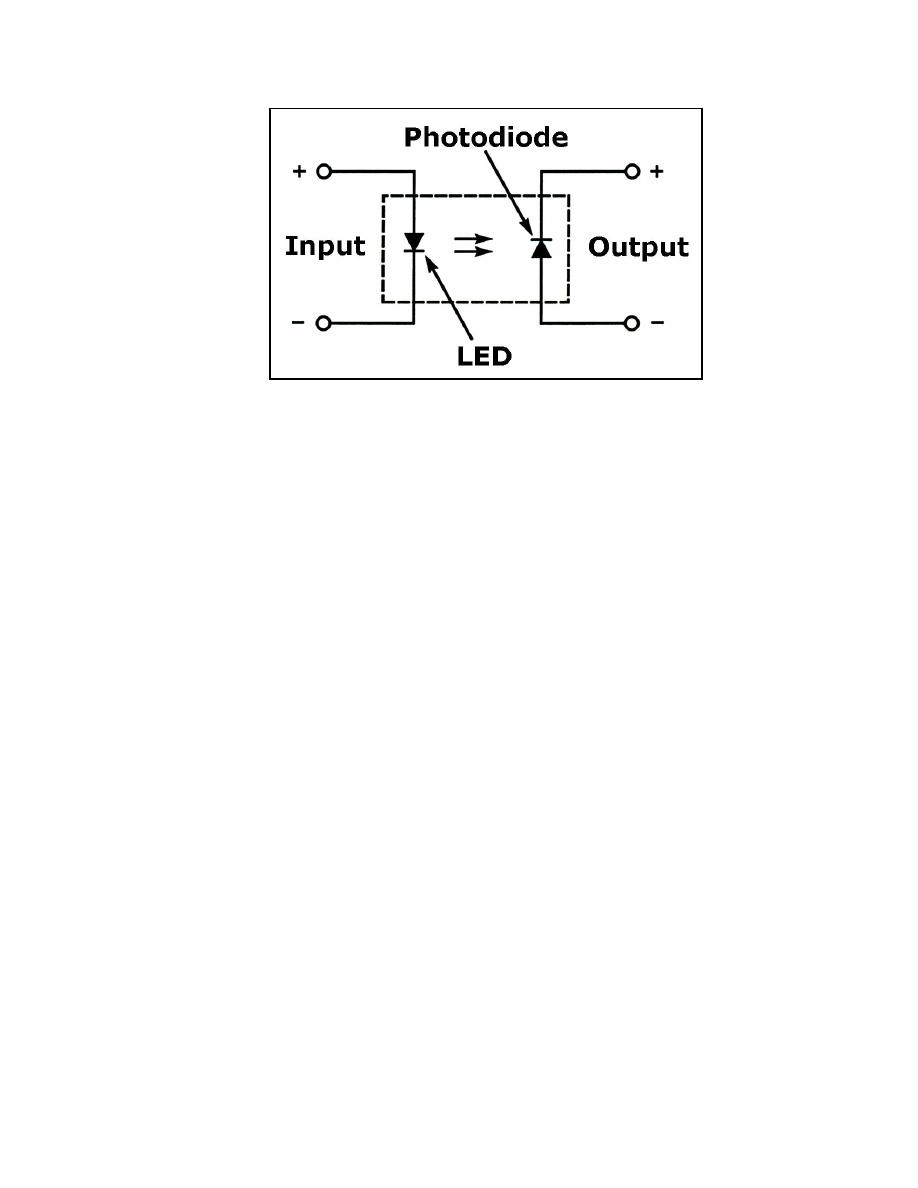
_______________________________________________________________________ Special Devices
Figure 3-37. Optical Coupler
3-63. The optical coupler is suitable for frequencies in the low megahertz range. The
photodiode type shown above can handle only small currents. However, other types of
couplers, combining phototransistors with the SCR, can be used where more output is
required. Optical couplers are replacing transformers in low-voltage and low-current
applications. Sensitive digital circuits can use the coupler to control large current and
voltages with low-voltage logic levels.
TRANSISTORS
3-64. Transistors are semiconductor devices with three or more terminals. The operation
of normal transistors has already been covered. However, there are several transistors with
special properties that should be explained. As with diodes, covering all the developments
in the transistor field would be impossible. The unijunction transistor and the field-effect
transistor will be covered because of their widespread application in Army equipment.
The Unijunction Transistor
3-65. The UNIJUNCTION TRANSISTOR, originally called a double-based diode, is a
three-terminal, solid state device that has several advantages over conventional transistors.
It is very stable over a wide range of temperatures and allows a reduction of components
when used in the place of conventional transistors. Figure 3-38 shows a comparison of a
conventional transistor and a UJT. View (A) shows a circuit using conventional transistors
and view (B) is the same circuit using the UJT. As you can see, the UJT circuit has fewer
components. Reducing the number of components reduces the cost, size, and probability of
failure.
3-66. The physical appearance of the UJT is identical to that of the common transistor
(see Figure 3-39). Both have three leads and the same basic shape. The tab on the case
indicates the emitter on both devices. The difference in the two is that the transistor has a
collector (C) (view A) while the UJT has a second base instead of a collector (view B).
3-67. The block diagram (see Figure 3-40) shows that the lead differences are even more
pronounced. Unlike the transistor, the UJT has only one PN junction. The area between
base 1 and base 2 acts as a resistor when the UJT is properly biased. A conventional
transistor needs a certain bias level between the emitter, base, and collector for proper
23 June 2005
TC 9-62
3-23



 Previous Page
Previous Page
